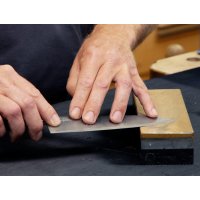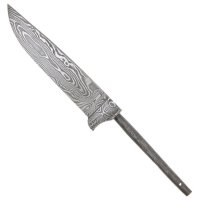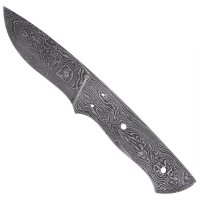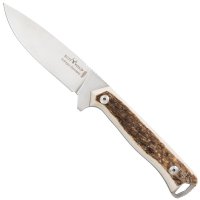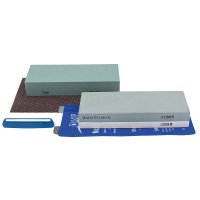
When sharpening knives, there are recurring trouble spots: the ricasso, bolster and heel. These prevent the cutting edge from being completely sharpened throughout. This often results in unfavourable blade shapes or even damage to the knife during sharpening. We will show you how to properly sharpen your knives despite the presence of a ricasso, bolster, and heel.
What is the ricasso?
The ricasso is the straight, unsharpened area of the knife blade near the handle. Not all knives have a ricasso, but it is common in outdoor knives and knives with robust blades. In folding or pocket knives, the ricasso is necessary as the folding mechanism requires a smooth surface for guidance.

The ricasso, bolster and heel restrict access to the cutting edge
What are the bolster and heel?
The bolster is a lateral thickening of the blade between the blade and handle. It is often extended downward to form the heel. This serves as a hand guard and is intended to prevent the fingers from sliding forward towards the cutting edge.
How do the ricasso and bolster affect the sharpening process?
The ricasso is usually as thick as the back of the knife blade, whereas the thickness of the bolster and heel are usually adapted to the handle or handle scales. The area of the cutting edge in close proximity to the ricasso or heel is very difficult to access. Moreover, the end of the cutting edge is often not clearly defined. Frequently, the ricasso and heel transition to the cutting edge in small curves.

Failure to restore the ricasso results in a hollow grind
If you try to grind the blade completely in the rear area, the edge of the sharpening stone will be heavily worn down. Repeated resharpening near the handle results in an inwardly curved section. Over time, the blade becomes narrower due to sharpening, and the ricasso and bolster protrude even further. When using the knife on a cutting board, it then becomes challenging to completely cut through the food because the protruding part (ricasso or heel) hits the cutting surface.
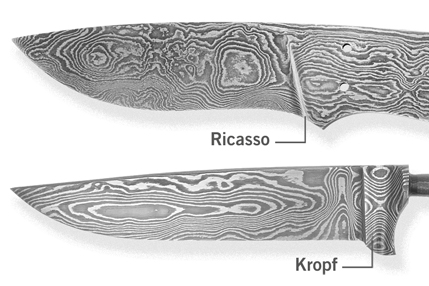
Examples: Blade blanks with ricasso and heel
Can I grind down the heel?
Yes, provided the knife is solidly constructed. In some budget knives, the bolster and heel may be hollow, resulting in a hole when restored. Unfortunately, this is often only evident after an attempt has been made to grind down the heel. One indication that the bolster may be hollow is the weight of the knife.
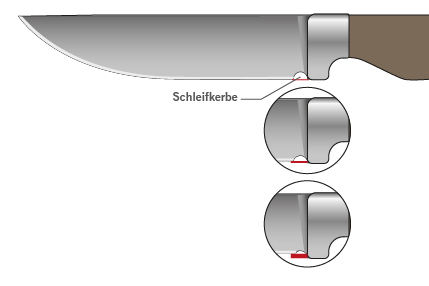
A sharpening choil allows sharpening to the end of the cutting edge, even if the blade narrows over time
How can I modify a knife with a ricasso for easier sharpening?
Many knives with a ricasso already come with a feature called a choil. This is a small indentation in the cutting edge in front of the ricasso, defining its end precisely and making it easily accessible during sharpening. You can also add such a choil afterwards. Doing this by hand is best accomplished with a diamond file (e.g., DMT® Diafold® Folding Cone File, Coarse), as knife blades are usually hardened. You can also grind the small notch using a multitool or a bench grinder (but ensure adequate cooling of the edge!). Even in knives with a heel, a choil precisely defines the end of the edge and facilitates sharpening.
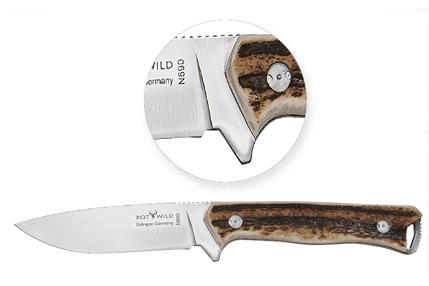
This hunting knife cleverly integrates the choil into its design

